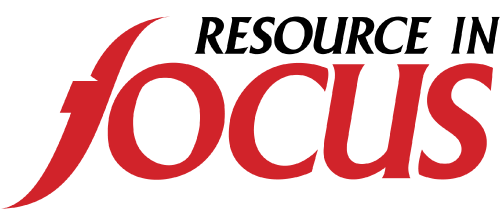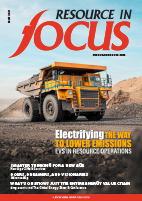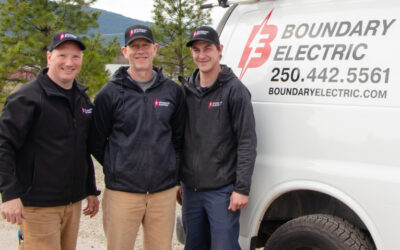The solar energy industry employs over a quarter of a million Americans who work for companies and organizations that are dedicated to the promotion, manufacture, installation, innovation and support of solar energy. The Solar Energy Industries Association (SEIA) represents all of them.
~
SEIA is an organization that serves over 1,000 member companies with the shared objective of removing barriers for increased rates of solar adoption and supporting job creation in the industry.
“Solar has now become an energy source with a lot of breadth and we represent all segments of the industry,” said Dan Whitten, SEIA’s Vice-President of Communications. This includes residential, commercial, large scale/utility solar companies, financiers, along with companies in the community solar space.
Minnesota and Massachusetts are great examples of how smart policies can translate into broader adoption of community solar, bringing the advantages of this cost-effective and environmentally sustainable energy source to people who rent, those with a shared roof, low-income families, and businesses large and small.
In fact, community projects are a burgeoning part of the industry and directly correlate with the values and mission of the industry. As Whitten noted, “The concept of solar energy – providing electricity to anybody and making it possible for people to make their own electricity choice, not being stuck with whatever electricity a monopoly provides for you – it’s sort of a concept that has motivated people to develop solar since the beginning.”
SEIA was established in 1974 to promote solar as a viable alternative energy source with fewer emissions than legacy fuel sources. The organization serves as the collective voice of the industry in Washington to advocate for policies that promote greater access to and acceptance of solar. As Whitten said, “At that time, it was just coming into public consciousness and it was considered more of a concept than an actual competitive product in energy markets, but there was a lot of appeal.”
Now, there are new ways to invest in and take advantage of solar energy. While SEIA was founded by people who used solar for heating, the development of photovoltaic solar panels significantly expanded its use and application.
“They were definitely visionary leaders because now, forty years later, it’s emerging as one of the top new sources of electricity in the country,” said Whitten. The introduction of an investment tax credit and falling prices both helped increase the rate of adoption.
“Back then, it might not have been conceivable that solar was going to immediately compete with king coal, nuclear and later natural gas and it has, and it’s particularly ramped up over the last ten years,” said Whitten.
Polling data shows that nearly 90 percent of people support solar, but more needs to be done to translate that soft support into active support. “Our job is very much about education. We know from polling that when people are educated, they have a much more favorable outlook on solar than when they are not,” noted Whitten. He acknowledged that, “Solar is the number one energy source that people want their utilities to provide. Attitudes are positive but actions need to be stronger to make change happen.”
SEIA actively educates the public about how solar can work for them, their business and their community. One of the ways this can be achieved is by focusing on the wins that solar has had over the last several years.
One of the greatest wins is the fact that market leaders like Walmart, Target, Amazon, Facebook and Google have all made massive investments in solar and are benefitting greatly from it. “If they can save money, everybody else can too. Companies large and small and people can benefit from investing in solar,” Whitten explained. “Individuals need to make that commitment and not only will they feel good about what they’ve done but they’re actually going to see economic returns.”
SEIA takes a multifaceted approach to the advocacy and advancement of the U.S. solar market. Further to its efforts to educate, its initiatives and advocacy center on four key pillars: social awareness, trade, technology and environment, finance and tax and solar policy. The organization has earned itself a seat at the table with decision makers and energy leaders who are working together to define the future of energy grids in the country to ensure future energy needs are met.
SEIA’s vision is to represent solar and help it become the single largest source of new energy generation in the United States over the next decade. To do that, the organization will need to defend the Investment Tax Credit, advocate at the policy level for fairness to increase access to the grid and continue to educate the public.
The organization’s goals include: achieving the installation of at least 100 gigawatts of solar electric capacity in the United States by 2022, with solar representing 15 percent of the country’s annual electricity generation by 2030, as well as being the largest source of new electricity generation annually. To achieve this, solar will need to be installed on four million rooftops in the United States by 2022 and by 2050, it would like to see at least 300 gigawatts of solar thermal installed as well. This, paired with effective and smart solar heating and cooling policies, could create jobs, provide economic stimulus and better serve the environment.
The organization’s goals are ambitious but realistic and will only be achieved when solar is no longer regarded as a partisan issue. “Solar is not going to win favor in policy circles if we don’t have bipartisan appeal,” said Whitten, and if the midterm election results in the United States are any indication, the political sphere is still rather divided on solar.
Whitten noted that while ballot initiatives were rejected in Arizona and Washington, there are a handful of new governors that are pledging 100 percent renewable energy portfolio standards. Nevada adopted a renewable energy portfolio standard of 50 percent which has been met with great optimism.
“It used to be that California was sort of the lone beacon leading the way in solar but now what you have is the Midwest states, like Michigan and Illinois, showing great enthusiasm for solar. Texas is going to be one of the fastest-growing solar states in the country. And in the Southeast, South Carolina is making big commitments to solar and North Carolina is now the second largest solar state in the country,” Whitten said.
While there have been many wins, the solar industry is facing a number of challenges, from tariffs and competition with traditional energy sources, to a rapid rate of innovation that has changed the market landscape. “Our electricity system has evolved in the last five years faster than it has in the last 150 years and I think you’ve got some old line organizations trying to maintain the status quo, spending lots of money to undermine the inevitable growth in solar,” said Whitten. “They see the future and they know their old business models are in jeopardy.”
While there are conflicts at the policy level both in the state and federal government and with other energy sources, SEIA takes a collaborative approach, working with stakeholders and competitors alike with regards to grid modernization, electricity delivery, time of day usage for different fuel sources, and storage.
“We need to keep working with policy makers, decision makers. Some of it is pretty complex; this stuff is not simple and it involves expertise (electrical engineering, legal, policy, logistics, etc.) and we need to get in there with these organizations making these decisions,” said Whitten.
Indeed, solar can serve to enhance energy and national security in the United States. It can diversify energy resources from which to draw, and it can strengthen the country’s energy infrastructure and resiliency. SEIA is committed to working with utilities to promote competitive market structure. It is also a leader in terms of diversity and inclusion.
“Our CEO Abby Hopper came into her role almost two years ago, setting diversity and inclusion as one of her top priorities, and part of the reason for that is she’s a successful woman who has achieved a lot and looks around and sees a lack of diversity in this industry and in some of the other industries she’s worked in and she was determined to do something about it,” explained Whitten.
SEIA hosts events dedicated to women’s empowerment and continuously looks to improve internal practices to ensure diversity and inclusion in the organization. This starts with its hiring practices. “It’s a challenge to change an entire culture and you have to go the extra mile to make sure that a good pool, a diverse pool of candidates is applying for your jobs and is aware that you have openings. It’s going to be a long process before we get to where we want to go but we are focused on it,” said Whitten.
SEIA is expanding its data gathering efforts to better understand where the organization and the industry is in terms of diversity which will better enable it to address the issue in a more targeted and meaningful way.
“We think of this as a virtuous cycle. We think that if we can start to get a bigger foothold that investment will pick up, jobs will pick up, the economy will pick up, more Americans will have access, we’ll develop a more diverse customer base and we will grow as a subject that people study in colleges across the entire country,” said Whitten.
As solar gains greater recognition in the market, as prices continue to come down and storage options improve, there will be a greater rate of solar adoption by individuals and businesses across the U.S.
More jobs will be created, the grid and the economy will be strengthened and diversified, the environmental outlook will be greater, and behind all of this, SEIA will continue to be the force advocating for a bright future with solar.













